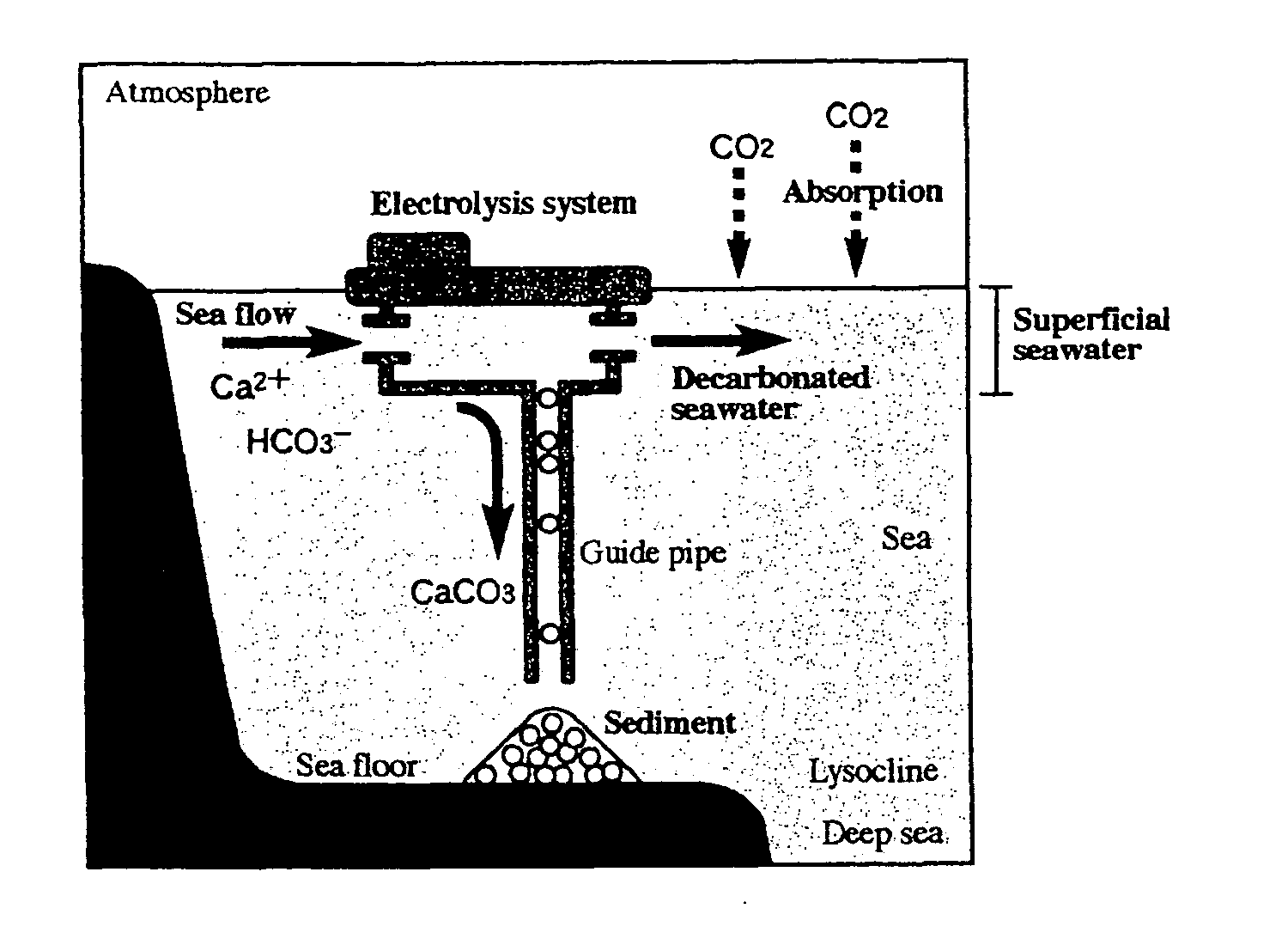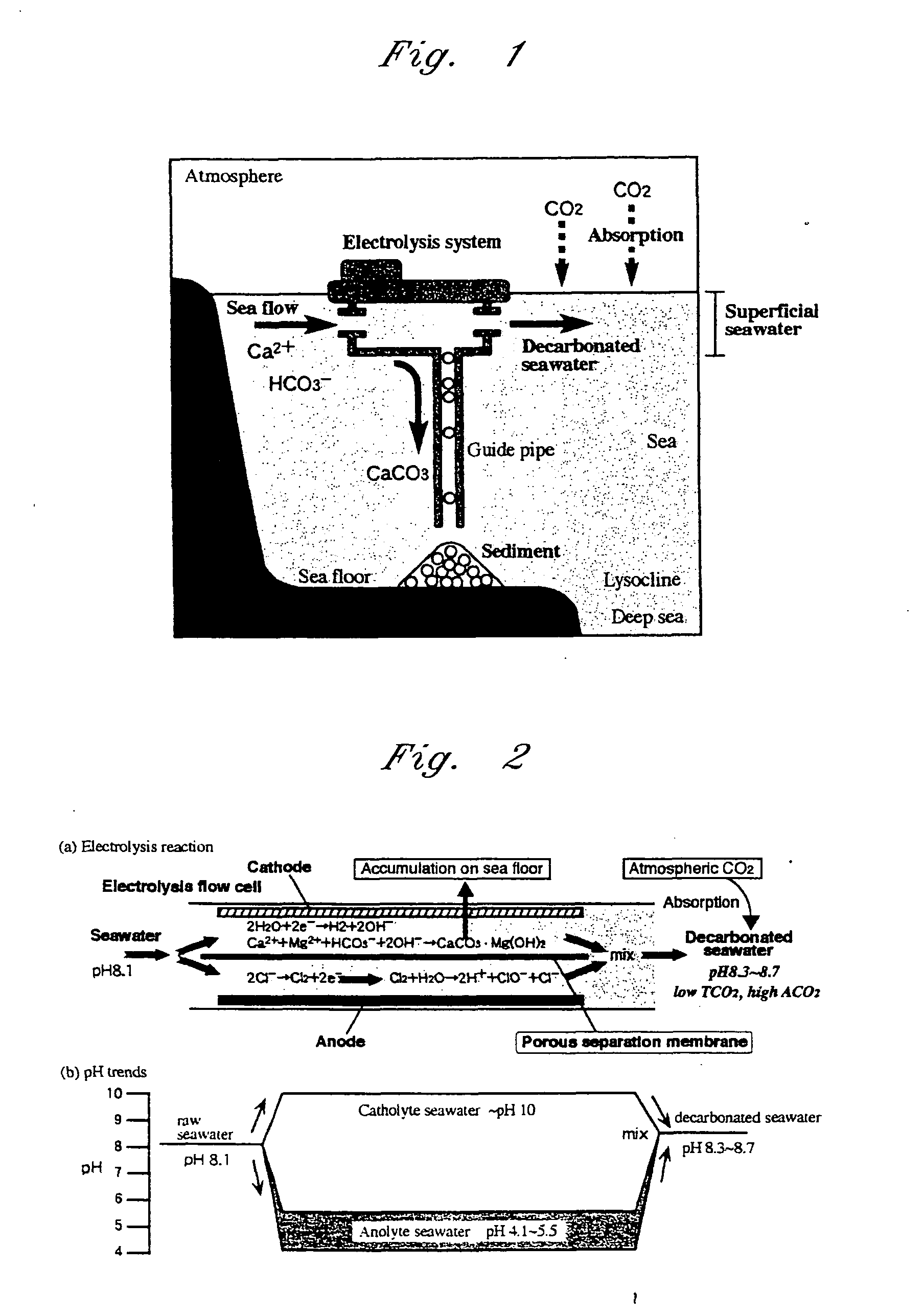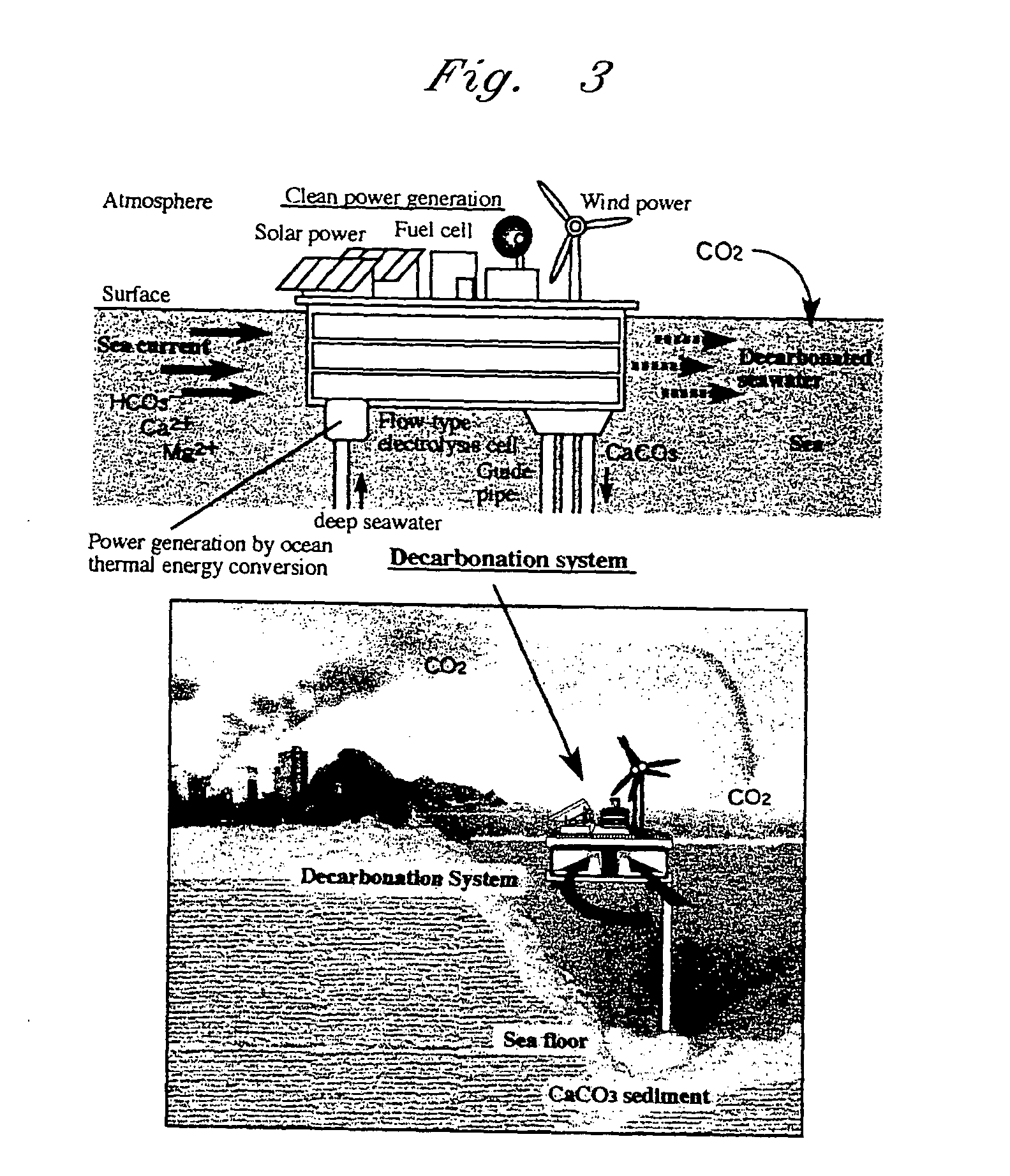Reduction method of atmospheric carbon dioxide, recovery and removal method of carbonate contained in seawater, and disposal method of the recovered carbonate
- Summary
- Abstract
- Description
- Claims
- Application Information
AI Technical Summary
Benefits of technology
Problems solved by technology
Method used
Image
Examples
example 1
[0026] Electrolysis treatment of the ocean water was carried out using a flow type electrolysis cell consisted of two cylindrical titanium mesh with different bore diameters coated with platinum as electrodes placed in a cylindrical electrolysis cell (internal diameter: 96 mm, length 500 mm) while keeping 20 mm between on e electrode and another, and a cylindrical porous membrane (polypropylene, pore size: 50-300 m) with the external diameter of 70 mm and the internal diameter of 55 mm place between two cylindrical electrodes. Constant flow rate of 1-4 L / min. of ocean water was allowed to flow through the electrolysis cell, and direct current voltage was impressed between two cylindrical electrodes.
[0027] As a result of the experimental electrolysis treatment, it was clarified that the carbonate contained in the ocean water is removed as a form of insoluble carbonate precipitate, and the effectiveness of the invention was confirmed. Precipitation of a fine and white material was be...
example 2
[0028] Recovery of hydrogen gas generated at cathode during the electrolysis treatment of the ocean water according to the invention was carried out by the same experimental condition as Example 1. As a result of the experiment, it was confirmed that the fine bubble produced at the cathode during the electrolysis treatment was hydrogen gas and the generation rate of the hydrogen gas was in proportion to the coulomb amount of the electrolysis treatment. A relation between energy consumption to be used for the electrolysis treatment and hydrogen gas generation was obtained as 2-4 mol / kWh. In addition to the hydrogen gas generated at the cathode, the hydrogen gas can be easily recovered since the permeability of the hydrogen gas to the gas separation film is high. Furthermore, The purity of the recovered hydrogen gas was higher than 95%, and the gas can be used as a resource gas for the O2—H2 fuel cell.
example 3
[0029] Compositions and forms of the insoluble carbonate generated by the electrolysis treatment of the ocean water according to the invention are dependent on the conditions of electrolysis treatment; the carbonate (low basic carbonate) with low basicity and high calcium carbonate contents is generated under the electrolysis treatment with low current density, and carbonate (high basic carbonate) with high basicity and low calcium carbonate contents is generated under the electrolysis treatment with high current density. Property of the carbonate is dependent on its shape and particle size, and the sedimentation speed of the produced carbonate in the ocean water with the ambient pressure is approximately 1-10 m / h which is much faster than the transfer speed of the components from surface ocean water to the deeper layer (approximately 1 cm / y). Furthermore, as a result of the pressurization treatment of the produced carbonate with the highly pressurized ocean water of 300-500 kg / cm2,...
PUM
| Property | Measurement | Unit |
|---|---|---|
| Concentration | aaaaa | aaaaa |
Abstract
Description
Claims
Application Information
 Login to View More
Login to View More - R&D
- Intellectual Property
- Life Sciences
- Materials
- Tech Scout
- Unparalleled Data Quality
- Higher Quality Content
- 60% Fewer Hallucinations
Browse by: Latest US Patents, China's latest patents, Technical Efficacy Thesaurus, Application Domain, Technology Topic, Popular Technical Reports.
© 2025 PatSnap. All rights reserved.Legal|Privacy policy|Modern Slavery Act Transparency Statement|Sitemap|About US| Contact US: help@patsnap.com



